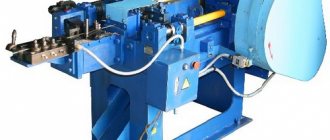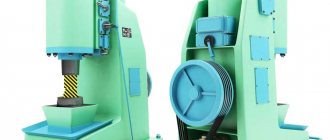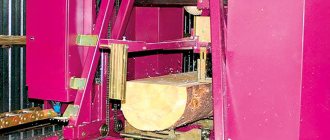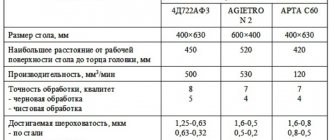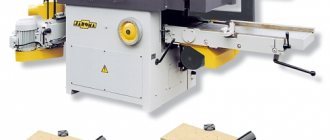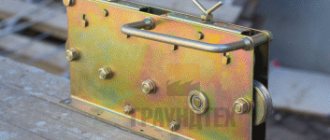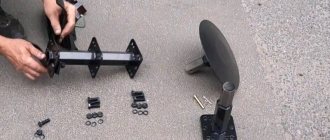Building brick is a material that has been used for construction for more than 5 thousand years. Brick is used in the construction of foundations, load-bearing walls of buildings, fences, and outbuildings. Modern production involves the use of special equipment for its production. The brick pressing press is the main equipment to cover the brick needs of construction today.
Depending on the type of building, the magnitude of the load and operating conditions, bricks have different strength and physical characteristics. Accordingly, the brick press machine also comes in different types, depending on the type of brick needed to be produced.
general characteristics
For the first time, people began producing building bricks in ancient times, in the 5th - 6th millennium BC. Of course, at that time the brick production line was still unknown to the people of that time. Regardless of its centuries-old history, brick is still one of the most necessary building materials. It has excellent technical and operational characteristics. Over time, the recipe for the production of building bricks has been improved, and the choice of products has expanded. Therefore, the production of each type of brick must be analyzed as a unique, separate technological, industrial process.
According to the production recipe, bricks are classified into two types:
- silicate brick, the main elements of which are:
- quartz sand; - water; - puffed lime.
- ceramic brick, which is made from clay.
Considering the color of the raw materials, several types of bricks are distinguished:
- clay (red);
- yellow;
- silicate (white).
Systematization of bricks, taking into account the scope of application, is classified:
- Construction brick.
A building material that is used as wall masonry and subsequently treated with plaster. There are two types of building bricks: hollow and solid.
- A facing brick is a block that is smooth to the touch and contains a large amount of voids in the “brick body”. Used to decorate buildings and structures and decoration.
- Clinker brick is a construction material that is used to cover roads.
- Hyperpressed bricks are used for exterior finishing of structures and building buildings.
Brick production technology
Production technology and the method of manufacturing building raw materials have been improved over a long period of time, and, therefore, brick production lines have also been modernized.
Nowadays, there are two brick production technologies:
Firing technology
Kilns for firing bricks
This technique is used in the manufacture of ceramic bricks. The technology is discussed in the methodical process of producing ceramic products in detail. As a result of using the methodology at the plant, the production of building bricks is also being implemented.
Non-fired brick technology
Unfired brick
This technology uses hyper- and tribo-pressing. In relation to firing technology, the production of hyper-pressed bricks takes place. The main difference between this technology and the first is the final stage of manufacturing. During this stage, the brick is placed in a steam chamber, which maintains a temperature of about 75 °C, for 11 hours. During the preparation stage, the firing process is not present, which means that the hyperpressed brick is retained naturally.
Dimensions and weight
Hyperpressed brick size:
- single: 250×120×65 mm;
- narrow: 250×60×56 mm;
- spoon: 250×85×65 mm.
Quite often there are products in which a length of 230 mm and a thickness of 65 mm are combined with a width of 50, 56, 100, 107 mm.
Weight of hyper-pressed brick: 4.2 kg (for standard size 250*120*65 mm).
Equipment
Brick production lines must contain the following basic technological equipment:
- Rumble.
- Crusher.
- Reception bunker.
- Concrete mixers.
- Formation installation.
- Two-armed heat.
- Lift.
- Compressor.
- Bunker weekend.
The capacity of the brick production line is 18 million pieces of product per year. Average price 1050 pcs. products total 5050 rubles, including VAT.
Line for cutting raw materials into bricks
The annual cost of purchasing materials and raw materials is 6.08 million rubles.
Electricity costs for one year will be 8.73 million rubles.
The cost of thermal activity for one year is 4.15 million rubles.
On average, the list of employees for a given line should contain no less than 125 people. In this case, the annual asset for wages for the staff of workers will be 11.1 million rubles.
The amount of costs for depreciation of the main fund is 11,198,160 rubles.
Due to the existence of the above coefficient, it is possible to calculate the cost of a brick production line.
Having summed up the entire cost of the equipment necessary to make a brick production line profitable, its price averages 2 million rubles.
How to choose a press to buy
The choice of equipment is influenced by a number of technical issues. This includes the volume of production and what kind of brick will be produced. It is necessary to consider whether this press will be new or used, domestic or imported. Each of these parameters affects what the price of a brick press will be.
The answer to the question of which brick press to buy will help clarify the price category of the product. If the press is needed for home needs, purchasing or manufacturing it will not entail large expenses. Although this can only be discussed in comparison. The purchase of equipment for the production of large volumes will cost more than one hundred thousand rubles.
Production of clay bricks
Press for the production of clay bricks
The production of clay bricks is carried out in a high pressure process of approximately 210 kg per cm 2, while its moisture content is 8–10%. This aspect will significantly reduce cement consumption. Thus, this will allow the brick to be laid directly from the machine belt to dry it. When producing bricks directly on the construction site, the “dry laying” method must be used. This means that clay bricks are laid on walls without mortar, that is, immediately after its formation. Bricks made using this installation have a huge advantage over those made using the “hand kneading” method. First of all, laying the wall is about 4-5%. Due to this, when bricks are formed by machines, the clay begins to shrink until their molecules begin to repel each other. When made manually, laying is 9-11%. Of course, the smooth edge of the brick allows for easier interior and exterior finishing. The outer part of the wall can be coated with a thin layer of Glinko admixture. Subsequently, it is necessary to apply Shuttle liquid waterproofing. It can protect walls from moisture.
Clay brick production line
The clay brick production line has a short reimbursement period, namely about one year. For manufacturing, you need to have only 2-3 employees and a minimum territory for the work area. The line is designed so that it can be easily transported and moved to the construction site. In turn, it is possible to install additional options:
- belt conveyor;
Industrial concrete mixer - concrete mixer;
- vibrating sieve
The technical characteristics of the clay brick production line are:
- The estimated capacity of the line is 550 blocks per hour or approximately 1 cubic meter per hour.
- Block parameters: 255x125x70 mm.
- Automatic operating mode.
- Molding machine with a power of 4.0 kW.
- The line voltage is 370 V or 55 Hz, it is possible to use a voltage of 220 V.
Weight and dimensions of the molding machine:
- length 1040 mm;
- width 780 mm;
- height 1300 mm;
- weight 420 kg.
Manufacturing of clamping pads
The jack rod is not very convenient to use; it usually requires an increased area of the compression headstocks to use a wide range of molds and work with large parts. In this case, the force must be distributed evenly over the entire area of the compressed surfaces, without causing deformation.
In the simplest case, short, solid ingots can act as clamping blocks. It is enough to simply make blind holes with threads for fixing them to the main structure of the press. But these kinds of parts are not always available to the average person, so we offer the option of making our own headstocks that can withstand significant compression forces without harm.
The top headstock must be able to be integrally fastened with the jack rod, which prevents shifting during operation. Simply put, a blind hole should be made in the headstock into which the heel of the jack will fit with minimal clearance. You will also need a pair of holes for attaching the return mechanism springs.
Both headstocks can be made from two sections of channel or four pieces of angle, forming a parallelepiped with open side edges. Seams on the planes through which the axis of the main working force passes should be welded with a continuous seam from the inside, the rest - from the outside. One of the faces is blanked with a square insert, after which the internal cavity is filled with sand concrete grade 500. After hardening, the headstock is welded on the other side, so two incompressible blocks are obtained.
Red brick production
The production and sale of red brick in construction can be a promising and profitable enterprise. Brick production lines, the price of which includes all the necessary equipment for the production of high-quality bricks, cost about 2.5 million rubles.
Red brick forming lines
The demand for an environmentally friendly and, at the same time, very durable material is only increasing with each season, and the equipment necessary for its production is becoming more accessible and ergonomic. Due to the constant improvement of technology involved in the industrial process, computerization and automation of lines, as well as product output, takes a minimum amount of effort and time than before. And these aspects necessarily have an impact on the cost of raw materials, which significantly reduces its indicative level.
Clay red bricks are made using two methods:
Raw brick molding
Apparatus for molding bricks
Molding is carried out from clay with a moisture content of 18–20%. Sometimes it is made from clay with fillers or thinners. The thinning agent is added to the mixture of clay with additives (mixture) at a time when the natural material is very fatty, and, therefore, requires thinning. The filler is added to the charge if it is necessary to obtain a lightweight porous brick at the output. For this purpose, a filler is added to the charge, which burns out during firing. Most often, it is in the form of peat, husks, and sawdust. With the plastic method (molding from a wet mass), the raw materials require drying. The material cannot be placed in a kiln without drying.
Production of raw materials by pressing method
Raw production is carried out from crushed, semi-dry mass with a moisture content of up to 8%.
This method requires bulky, complex, expensive equipment and machines. Therefore, it is used only in mechanized, large factories that produce bricks, which does not require external cladding or insulation with ceramic slabs. Using this method, raw material does not require drying. This partially offsets the costs of building a raw material drying workshop. In agricultural practice, as well as in factories of regional cooperative industry, this semi-dry molding method is, as a rule, not used. The production of red brick using a plastic method, which does not depend on the season, power and class of the plant, consists of five manufacturing stages:
Brick making press
- Procurement of material.
- Preparation of molding sand.
- Raw molding.
- Drying raw materials.
- Roasting raw materials.
Each stage operates in very different ways. This also includes the use of technology that requires human physical strength. And the use of complex units and mechanisms that automatically perform several procedures in the necessary sequence (order) established for a given unit.
Taking into account the machines available and currently used, agricultural brick-making organizations are divided into two types:
- not electrified;
- electrified.
Organizations of the first type most often have a productivity ranging from 55,000 to 550,000 bricks per season. Rarely 550,000 to 1 million bricks. Organizations of the second type are either fully mechanized or semi-mechanized. Their annual productivity is more than one million pieces of red brick.
Cutter for raw materials
This means that the main difference between these two types of factories is the degree of mechanization of production, which, in turn, depends on the availability of electricity. The technological progress of brick production, that is, the sequence, and the number of reprocesses are the same for the two types. However, the operations that are included in the complex of each stage are different.
Extruder
In order for the brick to have the necessary properties, you need to purchase equipment for the production of red brick. Of course, it is better to buy a new one, however, a used line can also do a good job. To do this, you just need to go to any search platform and enter the phrase “we will make a red brick production line” or “sell a red brick production line.” The total cost of the equipment, where is the brick production line, the price of which will be about 3 million rubles, taking into account the delivery and installation of the equipment. A brick production line, which can be purchased by contacting manufacturers or searching for the necessary advertisements on the Internet, will help the entrepreneur produce high-quality red bricks that have all the necessary characteristics. There is no need to skimp on the quality of equipment. You can cut costs by eliminating additional machines.
When producing red brick, you need to purchase the following equipment:
Crushing plant for crushed stone
- crushing plant for crushed stone to obtain fine gravel;
- mixer;
- a seeder to sift sand;
- a furnace that fires raw bricks;
- moulder;
- compressor device;
- auxiliary equipment:
- bunker;
— shipping tape;
— lifts.
The production premises must be equipped with a water supply system, since water is one of the main components used in the production of red brick.
Production of ceramic bricks
Ceramic brick
A beam is formed from a plastic mixture. A plastic molding press or extruder is designed for molding ceramic bricks and stones using conventional and semi-rigid extrusion.
For manufacturing, you can use various clay materials, for example, clay, loam, shale, which meets all the technological requirements of the production process.
Nowadays, there are non-vacuum and vacuum presses on the market. They use a pneumatic clutch. They protect the motor from overload, especially in stop-start mode. This contributes to the maximum service life of the equipment. It is allowed, with the electric motor turned on, to smoothly turn off and turn on the mixing and screw shaft, which will avoid a large starting torque when starting the motor. Improved oxygen supply units to the pneumatic coupling will increase the level of protection of the pneumatic system from oxygen leakage.
Ceramic brick production line
The formed timber is cut using a cutting machine into individual products. The result is raw brick, which must be placed on a wooden pallet and sent to drying chambers for drying. The ceramic brick production line has a small number of auxiliary equipment, which guarantees the production of a quality product.
Two Stage Vacuum Extruder
The two-stage vacuum extruder is designed to produce all types of hollow bricks from slate, coal, clay and coal. The spiral reamer shafts are made with an admixture of anti-friction coating. The extruder has an excellent design made of high quality steel. It is durable, efficient, can be used in a variety of conditions, and is also easy to maintain. Moreover, the extruder is equipped with a reamer made of durable materials, which are protected by a safety element. The reaming guarantees pressing efficiency and very high pressure. The gear wheel of the gearbox is very durable considering the material used. The operation of the spiral clamping device can also guarantee the long service life of the equipment. The installation in this equipment is designed to cut the clay strip into sections. Next, the workpiece is fed to a green brick cutter, which is used for cutting into blocks of equal length.
Finished ceramic brick cutting line
The raw brick cutting machine is used to cut the clay strip into sections from the extruder according to the required length standards. To meet different production formulation standards, there are 2 types of equipment:
— with vertical longitudinal cutting;
- with an arcuate longitudinal cutting.
This machine in this line can guarantee the required length of the strips and cut the clay strips automatically. A vertical cutting machine has its own characteristics:
- vertical cutting;
- small remainder;
- high efficiency.
The slurry strip cutting machine is necessary for recycling the material in the production process of tiles and bricks. This equipment in the ceramic brick production line performs the mixing function. Next, blending and homogenization occurs.
Slurry strip cutting machine
The twin-roll mixer has a dual purpose, namely homogeneous mixing and displacement of clay. On the front displacement ring there is a sheet or cutting device necessary for mixing and homogenizing different types of raw materials. Also to increase the plasticity and formability of raw materials.
The mixer-extruder has a feed inlet, which is equipped with a clay-pressing double plate. The extruder has high manufacturing efficiency, compact structure, stable operation.
In a non-vacuum extruder, the lower and upper stages are driven by one electric motor. The peculiarity of this structure is its novelty in appearance. Energy saving, high productivity, high spin pressure, wide technological application in this type of equipment.
Lego brick production
Machine for making Lego bricks
An unusual brick in the shape of a children's construction set is a novelty in the construction industry. There is no need for firing to produce it. Instead, a strong press is used. Almost every person can afford the production of this building material if there is a line for the production of Lego bricks.
To explore the process of producing Lego bricks, you need to consider the equipment for its production:
- bunker for dry mixtures;
Lego brick - dispensers;
- chambers for molding bricks;
- matrix located in the chamber;
- electric motor (manual machines do not have an engine);
- oil pumps;
- Hydraulic Press;
- stand for the entire unit.
The design scheme of each manufacturer is different, only the main unit of the machine is the same. The entire production process consists of high-pressure processing of the loaded mixture. The filler is sintered with water and cement, this method is called “cold welding”.
Principle of operation:
- The thoroughly mixed dry mixture is poured into the hopper.
- From the hopper, portions of mixtures in the required quantity fall into the tray. Next, the mixture enters the matrix and within a few seconds the press begins to act on it.
- The press moves away and the brick platform slides up.
- An employee removes the final brick and places it on pallets for subsequent drying and steaming.
- The completed brick must rest for two days to gain strength.
Advantages of making a machine yourself
Advantages of a homemade device:
- A do-it-yourself cinder block making machine costs less than a purchased one.
- Cheaper delivery. If during construction you need to replenish the supply of blocks, you can make the missing building materials directly on the construction site. This is especially convenient if construction is taking place outside the city. You don't have to go to the store to load and unload materials.
- There is no need to buy cinder blocks with a reserve. You can make them with precision down to one piece.
- When producing slag concrete products yourself, it is easy to control the components included in the solution. This is insurance against low-quality building materials. You can be sure that the cinder concrete solution does not contain toxic or other harmful components.
- After completion of construction work, the vibrating machine can be sold.

